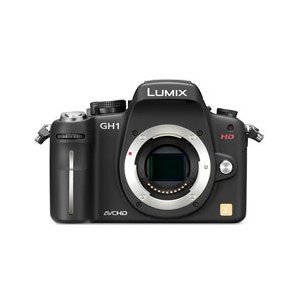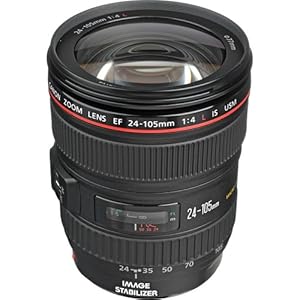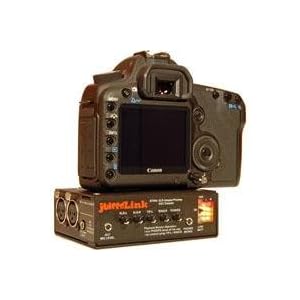Part III is about the change to HDSLR's for video.
 I had just bought the JVC HM100 tapeless video camera to replace my Sony V1, but my clients wanted the HDSLR look. With the Redrock the image was soft and hard to get because of all the adjustments. It was a beast and it did not like being handheld. Then came the HDSLR. The Canon 5D markII came out which shot 1080p video and some my associates were buying Canon. I realized that I was behind and that I needed to catch up.
I had just bought the JVC HM100 tapeless video camera to replace my Sony V1, but my clients wanted the HDSLR look. With the Redrock the image was soft and hard to get because of all the adjustments. It was a beast and it did not like being handheld. Then came the HDSLR. The Canon 5D markII came out which shot 1080p video and some my associates were buying Canon. I realized that I was behind and that I needed to catch up.
 I was interested in the Panasonic DMC-GH1
I was interested in the Panasonic DMC-GH1. I saw the GH1 at the Panasonic booth at CES in 2010. The GH1 was small and It had an electronic viewfinder. There were some nice lenses but only the Lumix G 7-14mm F4 would I consider exceptional. The Panasonic G Vario 14-140mm F4-5.8 has been optimized for video. It is an amazing lens for the price and being a 10X zoom. But the aperture is dark compared to prime lenses. I was impressed that the camera has a stereo microphonene. I did not like it having only 24p. That you had to remove the 2:3 pull down did not appeal to me. The 24p was written to the SD card in 1080i format and had to be converted to be progressive. The recording format was AVCHD. I could not play the files in Quicktime or the Mac finder. VLC Player will view the .mts files on a Mac. You have to use software to convert the files to Quicktime. Not a lot does this. I would use Final Cut 7 in Log And Transfer.
 After seeing what Canon HDSLR's could do, I sold my Olympus E-System and bought the Canon 7D. The 7D is a mixed blessing. A 35mm motion picture sized sensor instead of 35mm still sized sensor on the 5D. The Canon shot h264 video in Quicktime and could be viewed easily in the finder. There is 1080p at 24 and 30 fps. 720p at 60 fps. All modes are not interlaced and at broadcast friendly frame rates. They are progressive. Great looking video in a small package but only in certain circumstances.
After seeing what Canon HDSLR's could do, I sold my Olympus E-System and bought the Canon 7D. The 7D is a mixed blessing. A 35mm motion picture sized sensor instead of 35mm still sized sensor on the 5D. The Canon shot h264 video in Quicktime and could be viewed easily in the finder. There is 1080p at 24 and 30 fps. 720p at 60 fps. All modes are not interlaced and at broadcast friendly frame rates. They are progressive. Great looking video in a small package but only in certain circumstances.
 There is moiré and ailising because Canon line skips the CMOS chip because it has much resolution that HD video. There is Rolling Shutter which makes the video look like jello. So I also bought the better “L-Glass” for my Canon because I could afford it now because it was for my video camera. In fact I bought the Canon 24-105 f/4 L IS instead of the Canon 17-55mm f/2.8 IS because the 17-55 was too short for interviews. I bought Image Stabilized lenses because it minimizes the rolling shutter. The camera overheated on shoots and we had to shut down.
There is moiré and ailising because Canon line skips the CMOS chip because it has much resolution that HD video. There is Rolling Shutter which makes the video look like jello. So I also bought the better “L-Glass” for my Canon because I could afford it now because it was for my video camera. In fact I bought the Canon 24-105 f/4 L IS instead of the Canon 17-55mm f/2.8 IS because the 17-55 was too short for interviews. I bought Image Stabilized lenses because it minimizes the rolling shutter. The camera overheated on shoots and we had to shut down.
Monitoring was interesting in that because the camera had an optical viewfinder, video could only be seen with the LCD on the back. So external monitors helped but then you lost the LCD on the camera for using as a monitor as well. This had never happen on any video camera I had had. Also the output to an external monitor would not be clean, displays on the screen. Not true with any video camera I had ever used.
 Then there is audio. There is no headphone jack. The 7D had a pumping auto gain on the audio that could not be overdid, which is not good. The internal mic was mono. Most people used double system audio with a separate audio recorder. This does not fit into my book of simple and small. I found the JuicedLink DT454 preamp with an auto gain disabler that took one of the two audio channels and it had headphone monitoring. I always play back audio to make sure it recorded. It worked like a charm and I have never had my clients complain about the quality of the audio.
Then there is audio. There is no headphone jack. The 7D had a pumping auto gain on the audio that could not be overdid, which is not good. The internal mic was mono. Most people used double system audio with a separate audio recorder. This does not fit into my book of simple and small. I found the JuicedLink DT454 preamp with an auto gain disabler that took one of the two audio channels and it had headphone monitoring. I always play back audio to make sure it recorded. It worked like a charm and I have never had my clients complain about the quality of the audio.
The 7D was the best at the time for me but then the Canon 60D came out. Gone was the audio auto gain problem because it had manual control. I could also now use both channels. It still a mono internal mic. It has a high resolution swivel LCD. This makes low angle, high angle and any shooting easier. I created the L-Finder. I also found my HoodLoupe would mount on the LCD and make it like a video camera's viewfinder. No need for camera rigs because I could hold the camera steady with image stabilized lenses. In the 60D, Canon also added a histogram to the video mode. I was happy.











